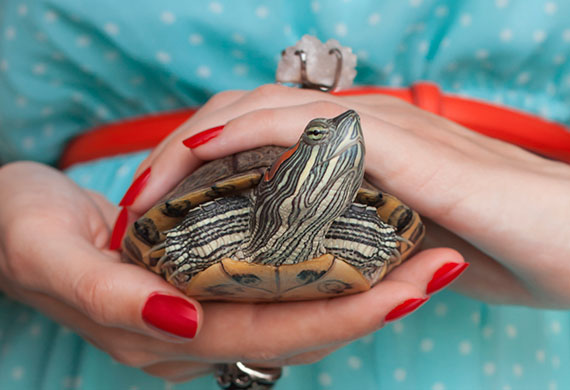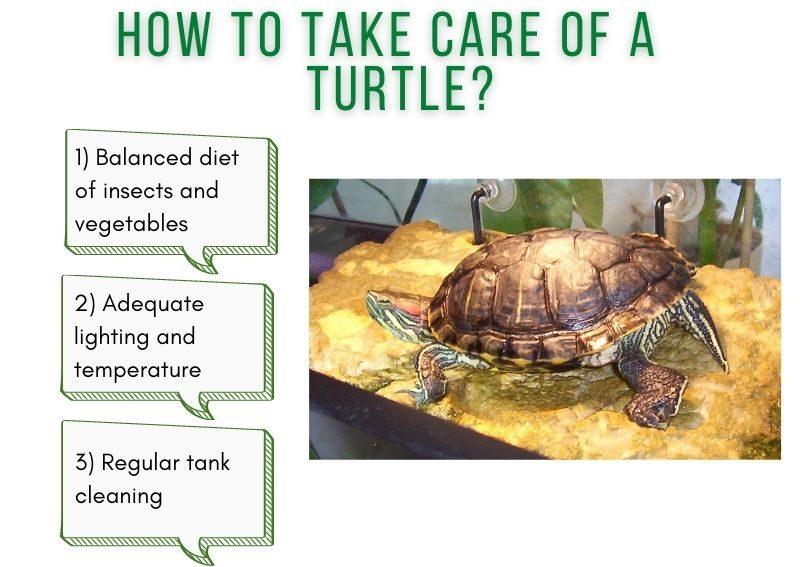Are you planning a trip and thinking about taking your pet turtle along for the ride? Well, you’ve come to the right place for some helpful dos and don’ts when it comes to traveling with your shelled friend. From ensuring their safety and comfort to following rules and regulations, there’s a lot to consider. So, let’s dive right in and explore some tips that will make your pet turtle’s journey enjoyable for both of you!
When it comes to traveling with your pet turtle, there are a few dos that will ensure a smooth and stress-free experience. Firstly, make sure to provide a secure and comfortable environment for your turtle during the journey. This can be achieved by using a well-ventilated and escape-proof enclosure. Additionally, provide your turtle with familiar items like its favorite hiding spots or toys to help them feel at ease. It’s also important to maintain a consistent temperature for your turtle, as sudden changes in temperature can be detrimental to its health. Now, these are just a few of the dos you need to keep in mind, but don’t worry, we’ll delve into more details in the article. So, stay tuned to learn all the dos and don’ts of traveling with your pet turtle!

Preparing for Travel
Choosing the Right Carrier for Your Pet Turtle
When it comes to traveling with your pet turtle, one of the most important things to consider is choosing the right carrier. You want to make sure your turtle is comfortable and secure during the journey. Look for a carrier that is well-ventilated and provides enough space for your turtle to move around. It’s also essential to choose a carrier that is sturdy and can withstand any rough handling during transportation.
Ensuring Proper Ventilation and Temperature
Turtles are ectothermic animals, which means they rely on their environment to regulate their body temperature. When traveling, it’s crucial to ensure proper ventilation and temperature control in your turtle’s carrier. Make sure the carrier has plenty of air holes for adequate airflow. Additionally, consider using a heat pack or providing a warm blanket to maintain a comfortable temperature for your pet turtle during colder months.
Securing the Carrier Properly
To ensure the safety of your pet turtle during travel, it is vital to secure the carrier properly. Make sure the carrier is securely latched and that there are no gaps or openings where your turtle can escape. If you are traveling by car, place the carrier in a secure location, such as the backseat or the trunk, and use seat belts or other restraints to prevent the carrier from sliding around. If you are traveling by air, follow the specific instructions provided by the airline for securing the carrier.
Health and Safety Considerations
Getting a Health Check-Up for Your Pet Turtle
Before embarking on a journey with your pet turtle, it’s essential to schedule a health check-up with your veterinarian. A thorough examination will ensure that your turtle is in good health and fit for travel. The veterinarian can also provide you with any necessary vaccinations or medications to keep your turtle protected during the trip.
Packing Essential Medications
When traveling with your pet turtle, it’s crucial to pack any essential medications that your turtle may need. This includes medications for any pre-existing conditions or preventive medications such as anti-parasitic treatments. Always carry an ample supply of medication, as you may not be able to find the same products while away from home. Also, don’t forget to pack any necessary medical supplies, such as syringes or eye drops.
Creating a Comfortable Environment
It’s essential to create a comfortable environment for your pet turtle during travel. Pack familiar items from your turtle’s regular habitat, such as bedding or toys, to help reduce stress and provide a sense of familiarity. Additionally, consider placing a small towel or cloth in the carrier to provide a cozy spot for your turtle to rest. Creating a comfortable environment will help keep your turtle calm and relaxed during the journey.

Traveling by Car
Planning Frequent Stops for Your Turtle to Stretch
If you’re traveling with your pet turtle by car, it’s essential to plan frequent stops along the way to allow your turtle to stretch its legs. Turtles need regular physical activity, and being confined to a carrier for an extended period can be stressful for them. When you stop, find a safe area where your turtle can roam and explore for a little while. Just ensure that the area is secure and free from any potential hazards.
Avoiding Direct Sunlight and Extreme Temperatures
When traveling by car, it’s crucial to protect your pet turtle from direct sunlight and extreme temperatures. Turtles are sensitive to heat and can quickly become overheated or dehydrated. Avoid placing the carrier in direct sunlight, as this can cause the temperature inside the carrier to rise rapidly. Additionally, avoid leaving your turtle in the car unattended, even for a short time, as the temperature inside a parked car can become dangerously hot.
Providing Fresh Water and Food
During car travel, it’s important to provide your pet turtle with fresh water and food. Turtles can become dehydrated easily, so ensure that your turtle has access to clean water at all times. Pack bottled water specifically for your turtle, as tap water in different locations can have varying qualities. As for food, pack enough of your turtle’s regular diet to last for the duration of the trip. This will help maintain your turtle’s regular feeding schedule and keep them comfortable during travel.
Traveling by Air
Checking Airline Policies for Traveling with Turtles
If you’re planning to travel with your pet turtle by air, it’s crucial to check the airline’s policies regarding traveling with pets. Some airlines may not allow turtles as carry-on or checked baggage, while others may have specific requirements that need to be met. Contact the airline ahead of time to inquire about their policies and any necessary documentation or permits required for traveling with a pet turtle.
Preparing Documentation and Permits
When traveling with a pet turtle by air, you may be required to provide certain documentation or permits. This is especially important if you are traveling internationally or to a different state or country with specific regulations. Contact the appropriate authorities to inquire about any necessary permits or certificates you may need and ensure that you have them in order before your travel date.
Booking a Direct Flight
If possible, it’s generally advisable to book a direct flight when traveling with your pet turtle. This eliminates the need for multiple transfers or layovers, which can be stressful for both you and your turtle. Additionally, a direct flight reduces the overall travel time, minimizing the time your turtle spends in the carrier and making the journey more comfortable and less hectic for them.

Traveling by Train
Researching Train Companies’ Pet Policies
If you’re considering traveling with your pet turtle by train, it’s essential to research the train companies’ pet policies. Not all train companies allow pets, and those that do may have specific requirements or restrictions. Make sure to contact the train company ahead of time to inquire about their policies and any necessary documentation or permits required for traveling with a pet turtle.
Booking a Pet-Friendly Train Car
When booking your train tickets, try to secure a seat or a compartment in a pet-friendly train car. These cars are specifically designated for passengers traveling with pets and provide a more accommodating environment for both you and your turtle. Pet-friendly train cars typically have additional space for carriers, as well as facilities for pet waste disposal.
Bringing Necessary Supplies
If you’re traveling with your pet turtle by train, it’s important to bring along any necessary supplies. This includes food, water, and medication, as well as bedding and toys to keep your turtle comfortable during the journey. Additionally, bring cleaning supplies to maintain the cleanliness of your pet’s enclosure. Having everything you need on hand will ensure a smooth and stress-free trip for both you and your turtle.
Traveling by Bus
Checking Bus Companies’ Policies for Pet Transportation
When traveling with your pet turtle by bus, it’s crucial to check the bus company’s policies regarding pet transportation. Not all bus companies allow pets on board, and those that do may have specific guidelines and requirements. Contact the bus company ahead of time to confirm their policies and any necessary documentation or permits required for traveling with a pet turtle.
Finding Pet-Friendly Bus Routes and Stops
If you’re planning to travel by bus with your pet turtle, it’s essential to find pet-friendly bus routes and stops. Some bus companies may only allow pets on specific routes or at certain stops. Research the bus company’s website or contact their customer service to inquire about pet-friendly options. This will help ensure a smooth and hassle-free journey for you and your pet turtle.
Keeping Your Turtle Secure
When traveling with your pet turtle by bus, it’s important to keep them secure at all times. Ensure that the carrier is properly latched and that there are no gaps or openings where your turtle can escape. If possible, keep the carrier on your lap or secure it on the seat next to you to prevent it from sliding during the bus ride. Additionally, avoid exposing your turtle to loud noises or sudden movements, as this can increase their stress levels.

Traveling by Boat
Understanding Maritime Regulations for Pet Turtles
If you’re planning to travel by boat with your pet turtle, it’s crucial to understand the maritime regulations regarding the transportation of pets. Different countries or regions may have specific guidelines or restrictions when it comes to bringing turtles on board. Contact the appropriate authorities or research the maritime regulations for your destination to ensure that you comply with all necessary requirements.
Preparing a Suitable Enclosure on the Boat
When traveling by boat with your pet turtle, you’ll need to prepare a suitable enclosure to keep them secure and comfortable during the journey. Ensure that the enclosure is spacious enough for your turtle to move around, and that it provides adequate ventilation. Additionally, secure the enclosure to prevent any accidental openings or spillage during rough waters. Always keep a watchful eye on your turtle while on the boat to ensure their safety.
Ensuring Safety during Water Travel
Traveling by boat can be a unique experience for your pet turtle, but it’s important to ensure their safety during water travel. Turtles are not natural swimmers and can easily become exhausted or disoriented in open water. Avoid placing your turtle in the water while the boat is moving and keep them in their enclosure. If you plan to take your turtle for a swim, do so in a controlled environment where you can closely supervise them.
Finding Accommodation
Researching Pet-Friendly Hotels or Rentals
When traveling with your pet turtle, it’s essential to research and book pet-friendly accommodation in advance. Not all hotels or rentals allow pets, and those that do may have specific rules or limitations. Use online booking platforms or contact the accommodation directly to inquire about their pet policies and any additional fees or requirements. Finding the right accommodation will ensure a comfortable and stress-free stay for both you and your pet turtle.
Informing Accommodation Staff about Your Pet Turtle
Once you have booked your accommodation, it’s important to inform the staff about your pet turtle. Provide them with any necessary information regarding your turtle’s needs or specific requirements. This will allow the staff to make any necessary preparations or arrangements to ensure a safe and comfortable stay for your pet turtle.
Adhering to Any Pet Policies
When staying at pet-friendly accommodation, it’s vital to adhere to any pet policies or rules set by the establishment. This includes keeping your pet turtle confined to the designated areas, cleaning up after them, and respecting other guests’ comfort. By following the guidelines set by the accommodation, you can help maintain a positive relationship between pet owners and the establishment.

Exploring Outdoor Environments
Choosing Safe Locations for Your Turtle
When exploring outdoor environments with your pet turtle, it’s important to choose safe locations that are suitable for them. Avoid areas that are known to have potential hazards, such as busy roads, polluted water sources, or areas with high levels of predators. Look for peaceful and secluded spots where your turtle can roam and explore without any risks to their safety.
Protecting Your Turtle from Predators and Hazards
When your pet turtle is out of their carrier and exploring outdoor environments, it’s important to protect them from predators and hazards. Keep a close eye on your turtle and ensure they are within a secure and supervised area. If necessary, use temporary fencing or enclosures to create a safe space for your turtle to explore. Additionally, remove any potential hazards, such as toxic plants or objects that your turtle could swallow.
Monitoring Your Turtle’s Behavior
While exploring outdoor environments, it’s important to closely monitor your turtle’s behavior. Watch for any signs of distress or discomfort, and be ready to intervene if necessary. Turtles can be easily overwhelmed or frightened by unfamiliar surroundings, so pay attention to their body language and adjust their environment accordingly to ensure they feel safe and secure.
Maintaining Hygiene and Cleanliness
Bringing Cleaning Supplies for Your Turtle’s Enclosure
When traveling with your pet turtle, it’s crucial to bring along cleaning supplies to keep their enclosure tidy and hygienic. Pack disinfectant wipes or sprays to clean the carrier or enclosure regularly. Additionally, bring trash bags to dispose of any waste properly. Maintaining cleanliness will help prevent the spread of bacteria and keep your pet turtle healthy throughout the journey.
Regularly Cleaning and Disinfecting the Enclosure
During travel, it’s important to regularly clean and disinfect your pet turtle’s enclosure. This includes removing any waste, leftover food, or dirty bedding. Use a mild detergent or disinfectant specifically designed for reptile enclosures to thoroughly clean the carrier or enclosure. Allow it to dry completely before placing your turtle back inside to prevent any contamination.
Proper Waste Disposal
Proper waste disposal is crucial when traveling with your pet turtle. Make sure to dispose of any waste in a sanitary manner to prevent the spread of bacteria or parasites. Use sealed plastic bags or specific waste disposal containers to safely store and dispose of waste. Additionally, avoid emptying waste directly into public spaces or bodies of water.
Feeding and Watering Your Turtle
Bringing Enough Food and Water for the Trip
When traveling with your pet turtle, it’s important to bring enough food and water for the duration of the trip. Turtles have specific dietary needs, so ensure that you pack their regular food and any necessary supplements. Additionally, bring enough water specifically for your turtle, as tap water in different locations can have varying qualities. Having an ample supply of food and water will ensure that your turtle remains healthy and comfortable throughout the journey.
Sticking to Regular Feeding Schedule
While traveling, it’s crucial to stick to your pet turtle’s regular feeding schedule as closely as possible. Turtles thrive on routine, and sudden changes in their feeding schedule can be stressful for them. Make sure to feed your turtle at the same times as you would at home and provide them with a balanced diet that meets their specific nutritional needs.
Using Appropriate Containers for Food and Water
When traveling with your pet turtle, it’s important to use appropriate containers for their food and water. Use spill-proof containers or bowls that are securely latched to prevent any accidental spills or leaks during transportation. Additionally, make sure the containers are made of non-toxic materials that are safe for your turtle to consume from.
Handling and Interaction
Being Gentle and Cautious while Handling Your Turtle
When handling your pet turtle during travel, it’s important to be gentle and cautious. Turtles are delicate creatures, and mishandling them can cause stress or injuries. Always support their body properly and avoid pulling on their limbs or shell. Additionally, avoid handling your turtle excessively, as this can also be stressful for them. Limit handling to necessary situations, such as cleaning or feeding.
Encouraging Positive Interaction during the Trip
While traveling, it’s important to encourage positive interaction between you and your pet turtle. Turtles are social animals and can benefit from human interaction. Talk to your turtle in a calm and soothing voice, and offer treats or rewards for good behavior. This will help strengthen the bond between you and your turtle and make the trip more enjoyable for both of you.
Respecting Your Turtle’s Comfort Zone
When traveling with your pet turtle, it’s essential to respect their comfort zone. Turtles are naturally shy creatures and may become stressed or frightened if they feel overwhelmed or exposed. Ensure that your turtle always has a hiding spot in their enclosure where they can retreat to if they feel anxious. Additionally, avoid exposing your turtle to excessive noise or sudden movements that can startle them.
Anticipating Stress or Anxiety
Recognizing Signs of Stress in Your Turtle
During travel, it’s important to recognize signs of stress or anxiety in your pet turtle. Common signs include loss of appetite, excessive hiding, increased aggression, or excessive basking. If you notice any changes in your turtle’s behavior or appearance, it’s crucial to address the issue promptly. Recognizing and addressing stress can help prevent further complications and ensure the well-being of your pet turtle.
Implementing Calming Techniques
If your pet turtle is showing signs of stress or anxiety during travel, it’s important to implement calming techniques to help them relax. This can include providing a quiet and dimly lit environment, playing soothing music, or using natural stress-reducing remedies such as lavender oil or chamomile. Additionally, ensure that your turtle’s enclosure is set up with familiar items from their regular habitat to provide a sense of comfort and security.
Seeking Veterinary Advice if Necessary
If your pet turtle is experiencing severe stress or anxiety during travel, it’s important to seek veterinary advice. A veterinarian who specializes in reptiles can provide guidance and recommend appropriate measures to help alleviate your turtle’s stress. They may also identify any underlying health issues that may be contributing to your turtle’s anxiety and provide the necessary treatment.
Returning Home
Gradually Reintroducing Your Turtle to Its Regular Environment
When returning home after traveling with your pet turtle, it’s important to gradually reintroduce them to their regular environment. Allow your turtle some time to readjust to their familiar surroundings before making any significant changes or introducing new stimuli. This will help reduce any stress or anxiety your turtle may experience after the trip.
Monitoring for Any Health Issues
After traveling, it’s important to closely monitor your pet turtle for any health issues that may have arisen during the journey. Look for any changes in behavior, appetite, or appearance. If you notice anything unusual or concerning, consult your veterinarian for a thorough examination and appropriate treatment.
Showing Extra Care and Attention
Returning home from a trip can be a bit overwhelming for your pet turtle, so showing them extra care and attention is crucial. Spend quality time with your turtle, offer their favorite treats, and engage in activities that they enjoy. This will help reassure them and make the transition back to their regular routine smoother.
In conclusion, traveling with your pet turtle can be an exciting and rewarding experience, but it requires careful planning and preparation. By following these dos and don’ts, you can ensure a safe and comfortable journey for both you and your beloved pet turtle. Remember to prioritize their health and well-being and make their comfort a top priority throughout the trip. With proper care and attention, traveling with your pet turtle can be an adventure you both enjoy and cherish.